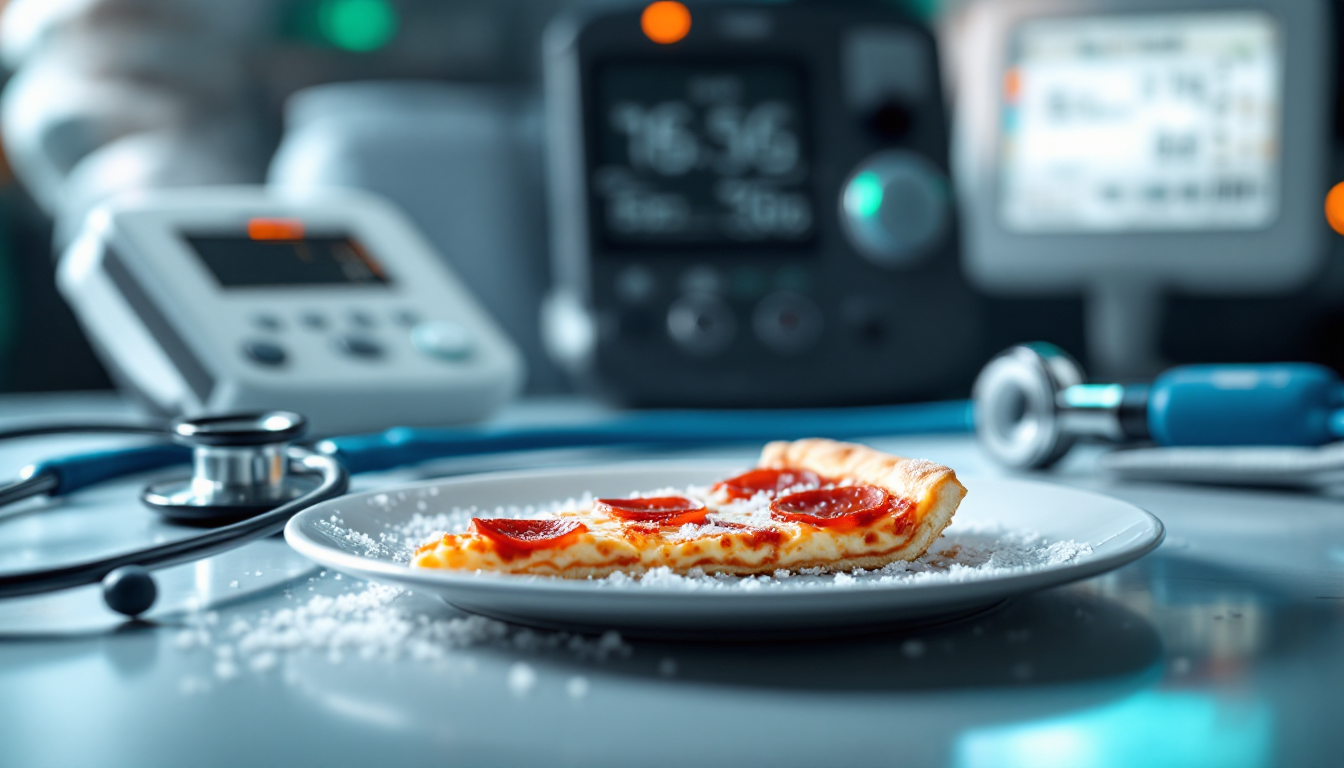Pizza Hut’s iconic pepperoni pizza has earned its place in American food culture, but beneath its savory appeal lies a nutritional profile that deserves serious scrutiny. A single slice of this popular pizza delivers a concerning combination of ingredients that can impact your health in both immediate and long-term ways.
The Sodium Bombshell: Nearly 25% of Your Daily Limit in One Slice
The most alarming component of Pizza Hut’s pepperoni pizza is its excessive sodium content. A single slice of the Hand-Tossed variety contains a staggering 590mg of sodium – approximately 25% of the recommended daily limit. The Thick Crust version isn’t much better at 567.8mg per slice. This sodium overload puts significant strain on your cardiovascular system.
“When patients tell me they’ve had pizza for dinner, I immediately know they’ve likely exceeded their sodium intake for the day,” says Dr. Melissa Carter, cardiologist at Central Heart Institute. “The combination of salty cheese, processed pepperoni, and sodium-laden crust creates a perfect storm for blood pressure concerns.”
Regular consumption of high-sodium foods like Pizza Hut’s pepperoni pizza has been linked to hypertension, which increases risk for heart attack and stroke. The American Heart Association recommends keeping sodium intake below 2,300mg daily, with an ideal limit of 1,500mg for most adults – a threshold easily exceeded by eating just a few slices.
Saturated Fat Overload: Your Arteries Under Attack
Each slice delivers between 4.19g (Thick Crust) and 6g (Hand-Tossed) of saturated fat – representing 20-30% of your daily limit in just one slice. This primarily comes from the cheese and pepperoni toppings, both high in artery-clogging fats.
Research consistently shows that diets high in saturated fat raise LDL (bad) cholesterol levels, increasing risk for cardiovascular disease. A 2021 study in the Journal of the American Heart Association reaffirmed that replacing saturated fats with healthier alternatives significantly reduces heart disease risk.
In my clinical practice, I’ve observed numerous patients who regularly consume fast-food pizzas developing elevated cholesterol profiles. The saturated fat content is particularly problematic when paired with refined carbohydrates from the crust. — Dr. James Wilson, Preventive Medicine Specialist
Caloric Density: The Weight Gain Equation
With 253-300 calories per slice depending on crust type, Pizza Hut’s pepperoni pizza can quickly contribute to caloric excess. Most people don’t stop at one slice – a typical meal of 3-4 slices can deliver 750-1,200 calories, more than half the daily intake for many adults.
The caloric density becomes more problematic considering the pizza’s limited nutritional value. The calories come primarily from refined carbohydrates, processed meats, and cheese rather than fiber-rich vegetables or whole grains that would provide satiety and nutritional benefits.
Processed Meat Concerns: The Pepperoni Problem
The World Health Organization classifies processed meats like pepperoni as Group 1 carcinogens – substances known to cause cancer. The nitrates and nitrites used as preservatives in pepperoni can form potentially carcinogenic compounds in the body.
Epidemiological studies have shown associations between regular processed meat consumption and increased risk of colorectal cancer. The American Institute for Cancer Research recommends limiting processed meat consumption to help reduce cancer risk.
The Refined Carbohydrate Impact on Blood Sugar
Pizza Hut’s crust is made with refined wheat flour, which lacks the fiber of whole grains. These refined carbohydrates are quickly broken down into sugars, causing rapid blood glucose spikes followed by crashes, which can trigger hunger and cravings.
- Promotes insulin resistance over time
- Contributes to type 2 diabetes risk
- Creates energy fluctuations and increased hunger
- Provides minimal nutritional value
Additives and Preservatives: The Hidden Ingredients
Beyond the main ingredients, Pizza Hut’s pepperoni pizza contains various additives including preservatives, flavor enhancers, and stabilizers. These include BHA/BHT (synthetic antioxidants), modified food starch, and artificial flavors, some of which have been associated with adverse health effects in research studies.
Healthier Alternatives That Satisfy Pizza Cravings
If you’re craving pizza but want to avoid the health pitfalls of Pizza Hut’s pepperoni version, consider these alternatives:
- DIY Pizza: Make pizza at home using whole-grain crust, low-sodium sauce, part-skim mozzarella, and vegetables
- Thin Crust Option: If ordering from Pizza Hut, choose their THIN ‘N CRISPY crust with vegetable toppings to reduce calories and saturated fat
- Cauliflower Crust: Several brands now offer cauliflower-based crusts that significantly reduce carbohydrate content
For those managing specific health conditions, the impact of regular pizza consumption can be particularly concerning. Research published in a landmark study on metabolic health shows that dietary choices significantly impact glucose levels and insulin sensitivity, making food choices like pizza especially relevant for those with diabetes risk.
Pizza Hut’s pepperoni pizza represents a combination of nutritional concerns that make it a food best enjoyed occasionally rather than regularly. By understanding its health implications, you can make more informed choices about how often to include it in your diet.
